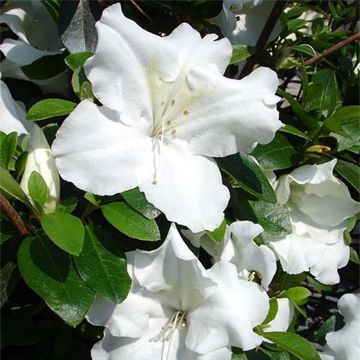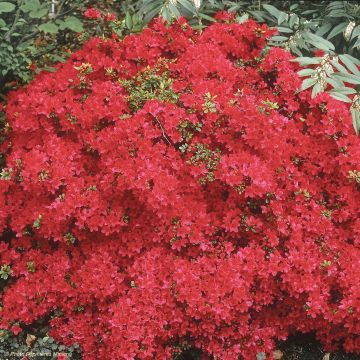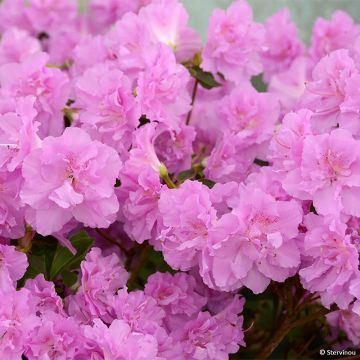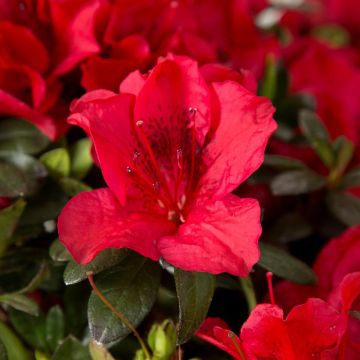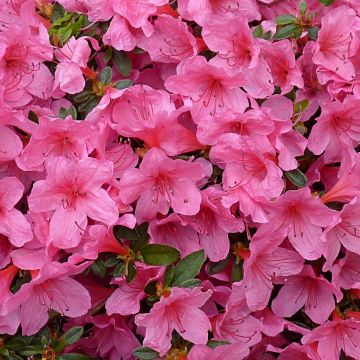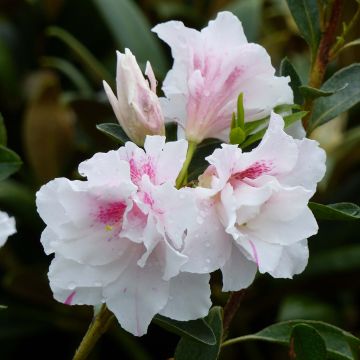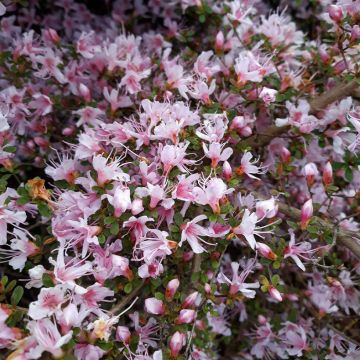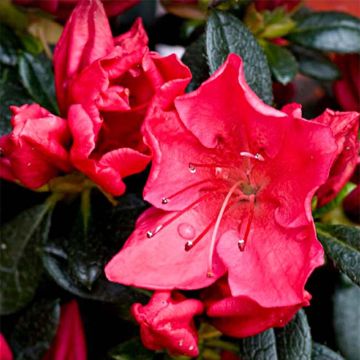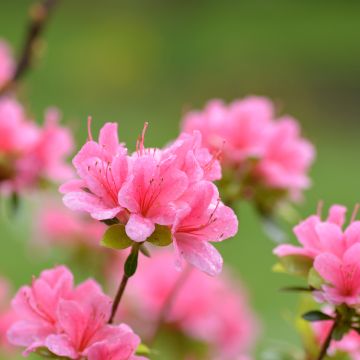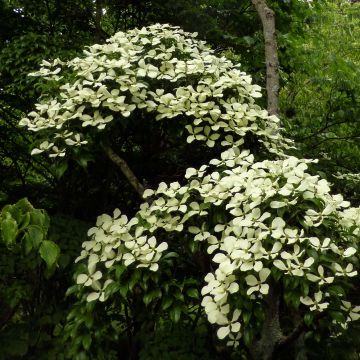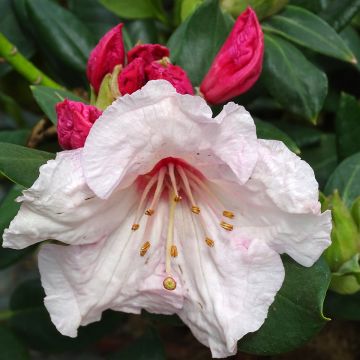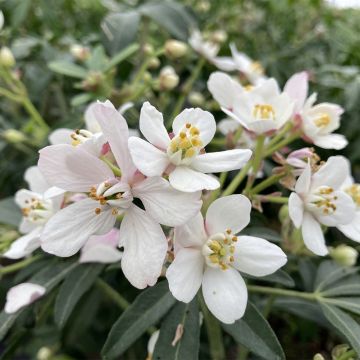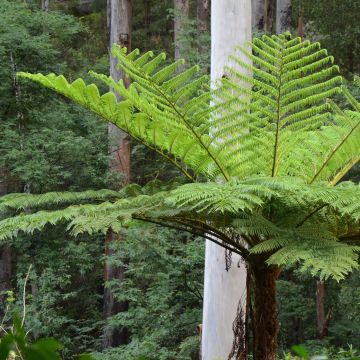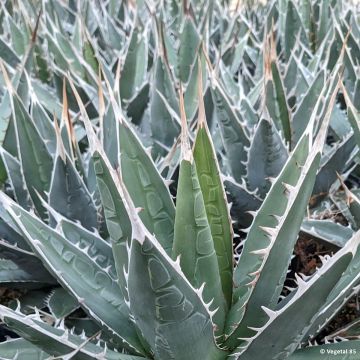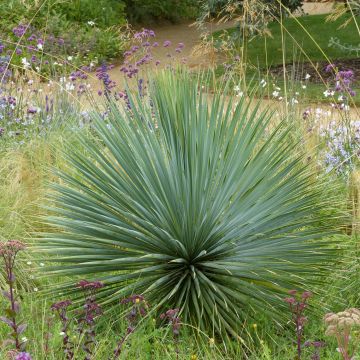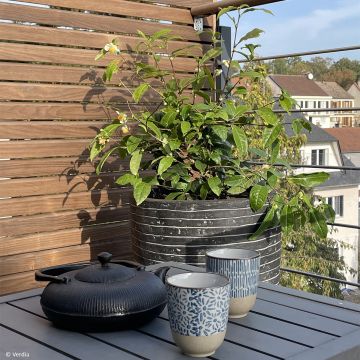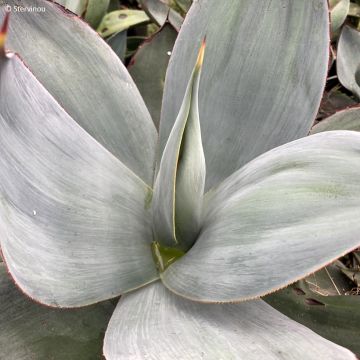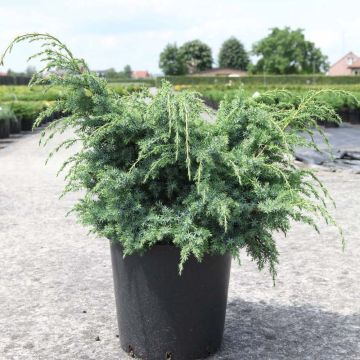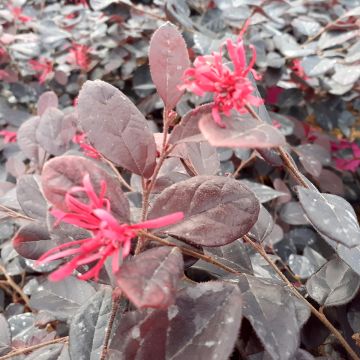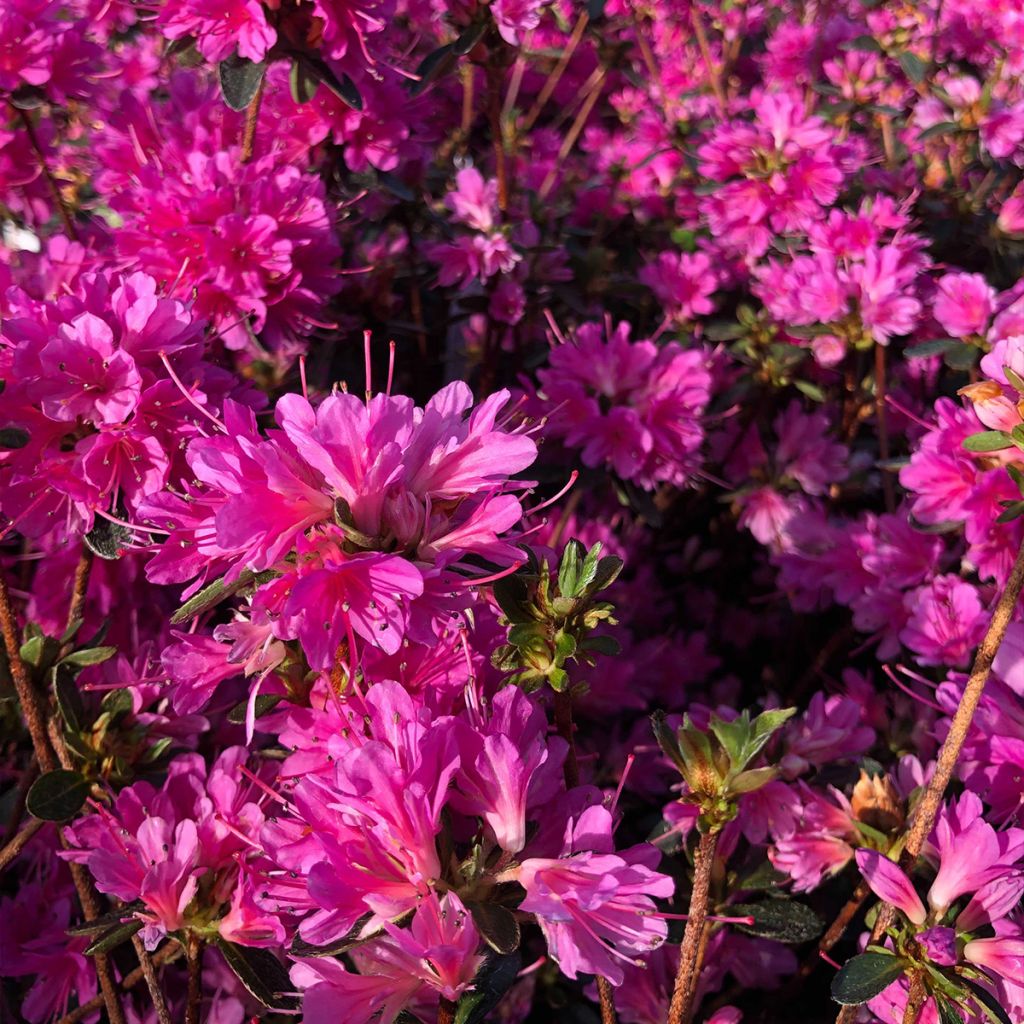

Rhododendron kaempferi Amoena - Japanese Azalea
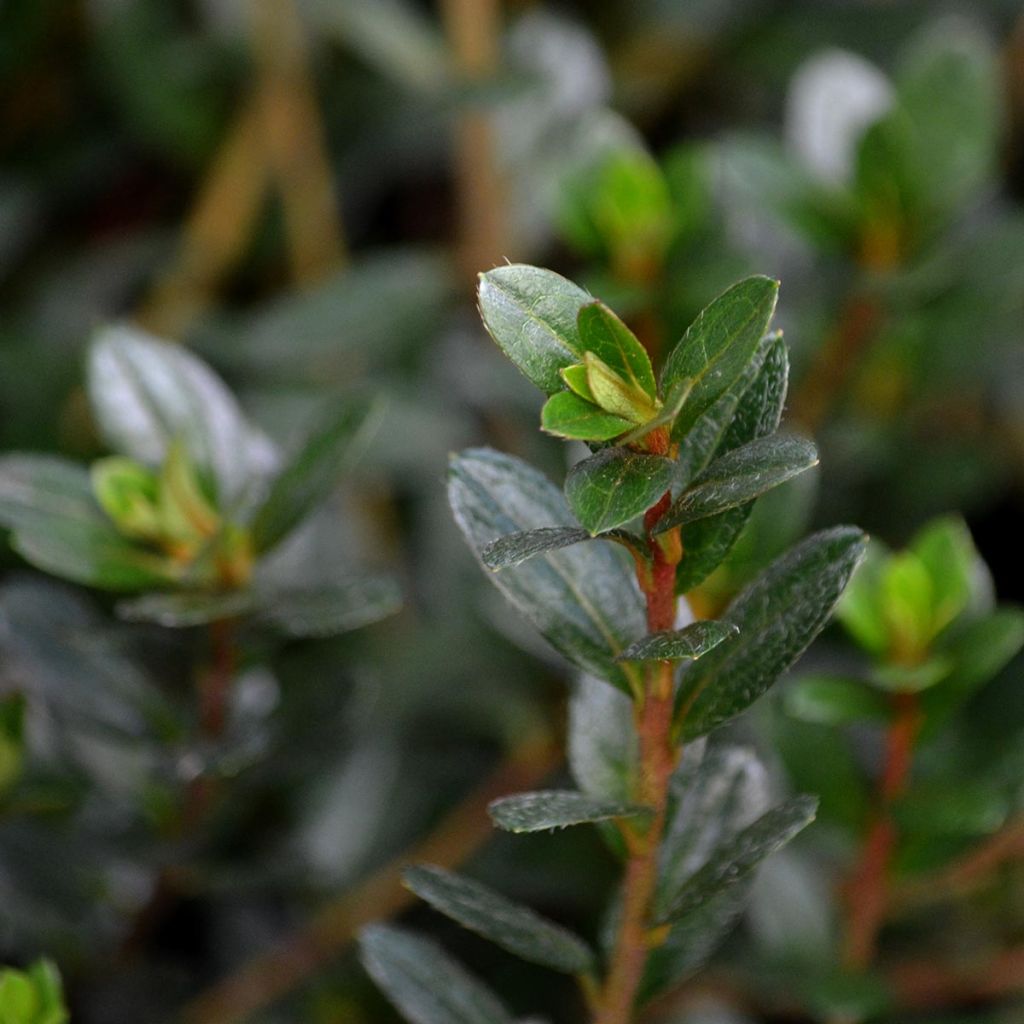

Rhododendron kaempferi Amoena - Japanese Azalea
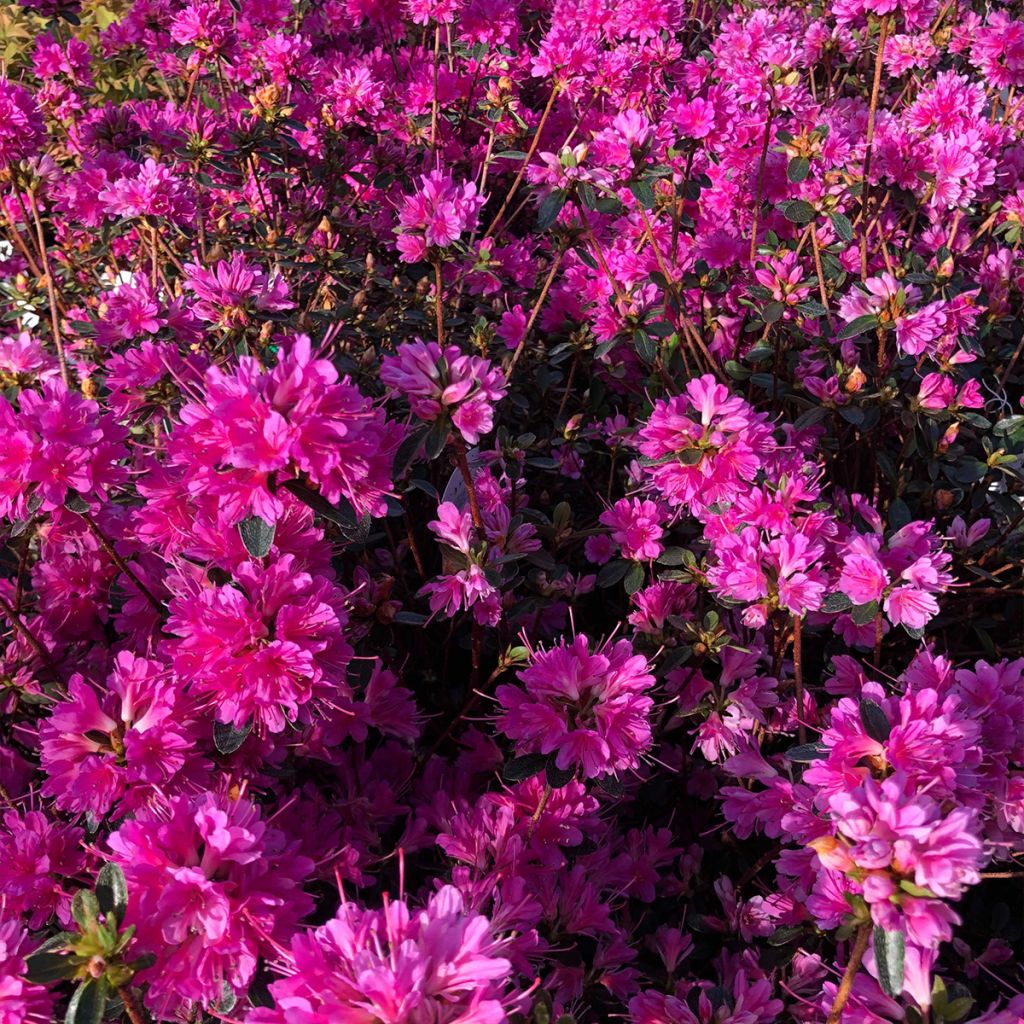

Rhododendron kaempferi Amoena - Japanese Azalea
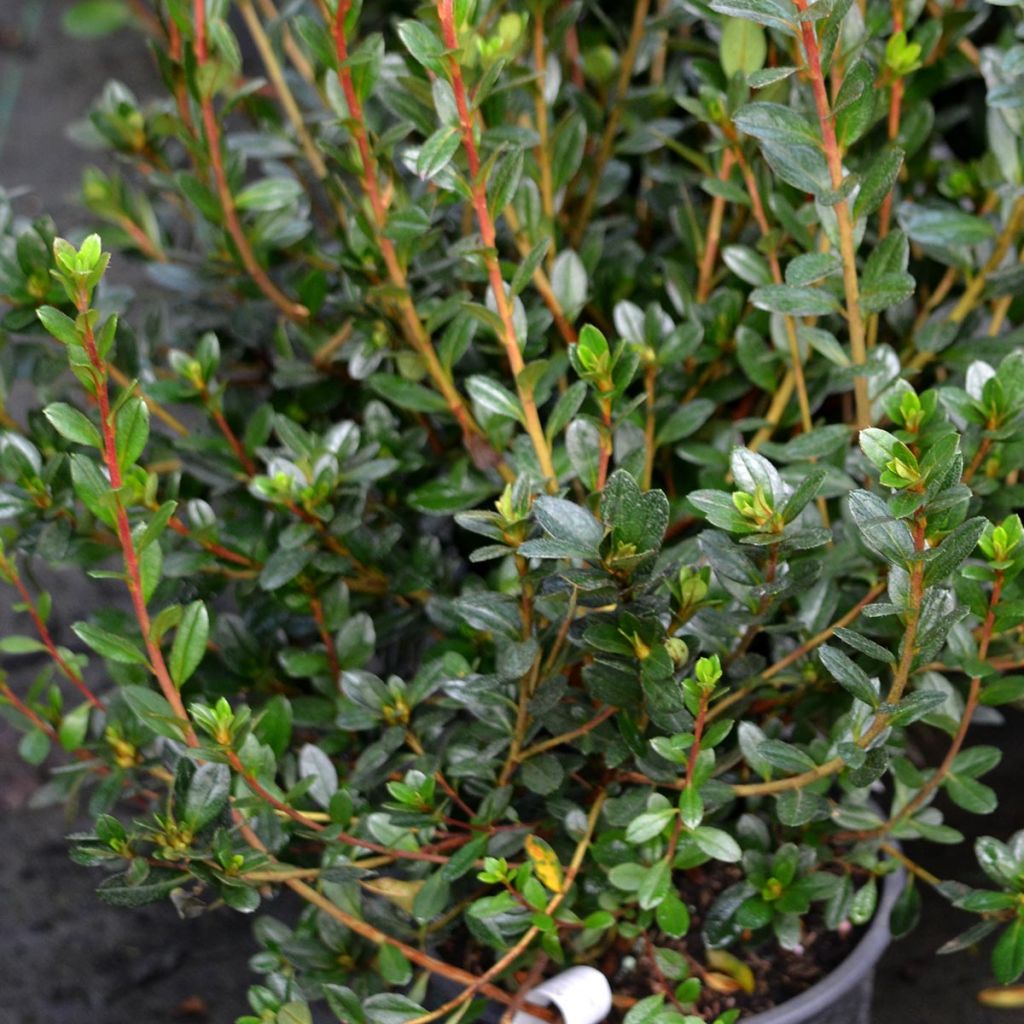

Rhododendron kaempferi Amoena - Japanese Azalea
Rhododendron kaempferi Amoena - Japanese Azalea
Rhododendron (Azalea) x kaempferi Amoena
Torch Azalea, Japanese Azalea
This item cannot be shipped to the selected country
Delivery charge from €5.90
Delivery charge from €5.90
More information
Schedule delivery date,
and select date in basket
This plant carries a 24 months recovery warranty
More information
We guarantee the quality of our plants for a full growing cycle, and will replace at our expense any plant that fails to recover under normal climatic and planting conditions.
From €5.90 for pickup delivery and €6.90 for home delivery
Express home delivery from €8.90.
From €5.90 for pickup delivery and €6.90 for home delivery
Express home delivery from €8.90.

Does this plant fit my garden?
Set up your Plantfit profile →
Description
Azalea japonica Amoena is a very ancient Japanese variety still appreciated for its vigour, its compact ball shape, and the abundance of its magenta purple-pink flowers. The dense foliage of this small bush, lasts well into winter, disappearing under a multitude of small double flowers in early of spring. It is a delightful ericaceous plant that will liven up shady rockeries, terraces, or under the canopy of tall rhododendrons, all year round.
The Azalea Amoena was already flowering in Japanese gardens before arriving in Europe around 1845. This hybrid is classified in the Obtusum Group, composed of hybrids of Rhododendron kaempferi. It is a vigorous, evergreen, slow-growing hybrid that does well in cool and damp temperate climates, with defined seasons. This Amoena variety is known to withstand frosts of around -12/-15°C (10/5°F).
'Amoena' is a well-branched variety, with a dense and rounded habit, widening somewhat with age. It reaches a height of about 80-90 cm (31.5 - 35.4 in) and a spread of 1 m (3.3 ft) by the age of 10. It flowers at the beginning of the Japanese azalea season, usually in March-April, for about 3 weeks. The 2.5 cm (1 in) diameter flowers have two rows of intense magenta-pink petals. The throat is a darker purple pink. They are funnel-shaped and gathered in terminal clusters. The evergreen foliage consists of small, single, elliptical leaves with smooth edges, arranged alternately on the branches. The young leaves are light green and become dark green in summer and winter. Each leaf has a lifespan of 3 years. Azaleas and rhododendrons have a shallow root system that always needs to be kept moist, but they also dislike waterlogged soil which would suffocate them.
Japanese azaleas thrive in cool and humid climates, with pronounced winters, planted in humus-rich and acidic soil, such as ericaceous soil. Under these conditions, they are beautiful evergreen shrubs for flowerbeds or flowering pots, attractive all year round. They are perfect with heathers, Japanese maples, or their relatives, Chinese Azaleas, which change colour throughout the seasons, as well as Japanese camellias and their graceful autumn-flowering cousins, often fragrant Camellia sasanqua hybrids. This Amoena variety, rather early and remarkably colourful, extends the flowering period of the ericaceous beds, in the company of other azaleas and rhododendrons. Due to its slow growth, it can be grown for many years in a large, carefully chosen pot, in suitable soil, watered with lime-free water.
Report an error about the product description
Rhododendron kaempferi Amoena - Japanese Azalea in pictures
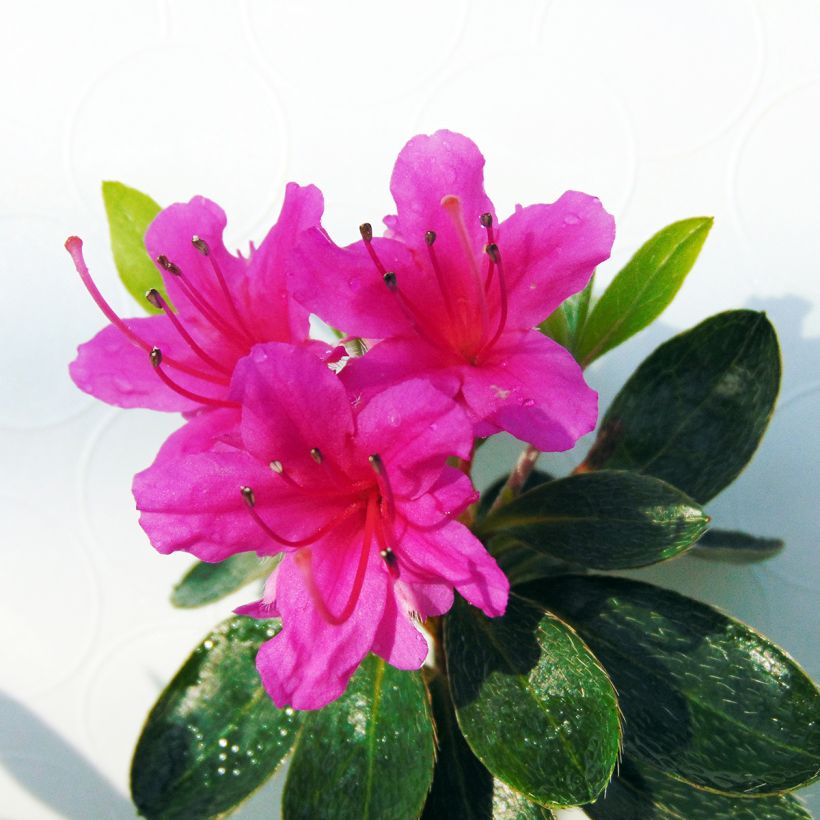



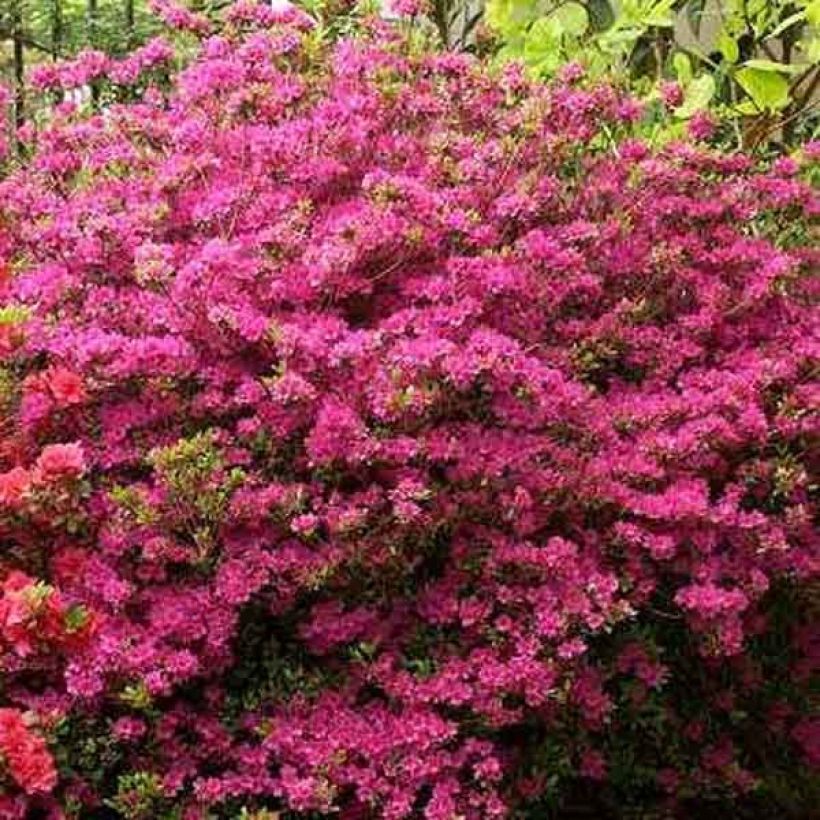

Plant habit
Flowering
Foliage
Safety measures
Botanical data
Rhododendron (Azalea)
x kaempferi
Amoena
Ericaceae
Torch Azalea, Japanese Azalea
Cultivar or hybrid
ingestion
Cette plante est toxique si elle est ingérée volontairement ou involontairement.
Ne la plantez pas là où de jeunes enfants peuvent évoluer, et lavez-vous les mains après l'avoir manipulée.
Pensez à conserver l'étiquette de la plante, à la photographier ou à noter son nom, afin de faciliter le travail des professionnels de santé.
Davantage d'informations sur https://plantes-risque.info
Other Japanese Azalea
Planting and care
The Azalea japonica flowers abundantly in shaded conditions. Plant it in an ericaceous soil, moist but well-drained and above all lime-free. When planting, make sure not to bury the root ball too deep, it should be at ground level. Water abundantly during dry periods, at least once a week during the first year. In spring, apply a fertilizer for ericaceous plants. After flowering, pruning lightly to keep the plant tidy, though it is not essential. Remove faded flowers to encourage the emergence of new shoots. Azalea has few diseases when well established outdoors. It can be attacked by weevils that eat the edges of the leaves and rootlets, as well as by the famous "rhododendron lace bug" which rarely causes serious damage. If the soil is calcareous, if the plant is planted too deep or if the soil is poorly drained, the leaves may turn yellow.
Planting period
Intended location
Care
-
, onOrder confirmed
Reply from on Promesse de fleurs
Evergreen shrubs
Haven't found what you were looking for?
Hardiness is the lowest winter temperature a plant can endure without suffering serious damage or even dying. However, hardiness is affected by location (a sheltered area, such as a patio), protection (winter cover) and soil type (hardiness is improved by well-drained soil).

Photo Sharing Terms & Conditions
In order to encourage gardeners to interact and share their experiences, Promesse de fleurs offers various media enabling content to be uploaded onto its Site - in particular via the ‘Photo sharing’ module.
The User agrees to refrain from:
- Posting any content that is illegal, prejudicial, insulting, racist, inciteful to hatred, revisionist, contrary to public decency, that infringes on privacy or on the privacy rights of third parties, in particular the publicity rights of persons and goods, intellectual property rights, or the right to privacy.
- Submitting content on behalf of a third party;
- Impersonate the identity of a third party and/or publish any personal information about a third party;
In general, the User undertakes to refrain from any unethical behaviour.
All Content (in particular text, comments, files, images, photos, videos, creative works, etc.), which may be subject to property or intellectual property rights, image or other private rights, shall remain the property of the User, subject to the limited rights granted by the terms of the licence granted by Promesse de fleurs as stated below. Users are at liberty to publish or not to publish such Content on the Site, notably via the ‘Photo Sharing’ facility, and accept that this Content shall be made public and freely accessible, notably on the Internet.
Users further acknowledge, undertake to have ,and guarantee that they hold all necessary rights and permissions to publish such material on the Site, in particular with regard to the legislation in force pertaining to any privacy, property, intellectual property, image, or contractual rights, or rights of any other nature. By publishing such Content on the Site, Users acknowledge accepting full liability as publishers of the Content within the meaning of the law, and grant Promesse de fleurs, free of charge, an inclusive, worldwide licence for the said Content for the entire duration of its publication, including all reproduction, representation, up/downloading, displaying, performing, transmission, and storage rights.
Users also grant permission for their name to be linked to the Content and accept that this link may not always be made available.
By engaging in posting material, Users consent to their Content becoming automatically accessible on the Internet, in particular on other sites and/or blogs and/or web pages of the Promesse de fleurs site, including in particular social pages and the Promesse de fleurs catalogue.
Users may secure the removal of entrusted content free of charge by issuing a simple request via our contact form.
The flowering period indicated on our website applies to countries and regions located in USDA zone 8 (France, the United Kingdom, Ireland, the Netherlands, etc.)
It will vary according to where you live:
- In zones 9 to 10 (Italy, Spain, Greece, etc.), flowering will occur about 2 to 4 weeks earlier.
- In zones 6 to 7 (Germany, Poland, Slovenia, and lower mountainous regions), flowering will be delayed by 2 to 3 weeks.
- In zone 5 (Central Europe, Scandinavia), blooming will be delayed by 3 to 5 weeks.
In temperate climates, pruning of spring-flowering shrubs (forsythia, spireas, etc.) should be done just after flowering.
Pruning of summer-flowering shrubs (Indian Lilac, Perovskia, etc.) can be done in winter or spring.
In cold regions as well as with frost-sensitive plants, avoid pruning too early when severe frosts may still occur.
The planting period indicated on our website applies to countries and regions located in USDA zone 8 (France, United Kingdom, Ireland, Netherlands).
It will vary according to where you live:
- In Mediterranean zones (Marseille, Madrid, Milan, etc.), autumn and winter are the best planting periods.
- In continental zones (Strasbourg, Munich, Vienna, etc.), delay planting by 2 to 3 weeks in spring and bring it forward by 2 to 4 weeks in autumn.
- In mountainous regions (the Alps, Pyrenees, Carpathians, etc.), it is best to plant in late spring (May-June) or late summer (August-September).
The harvesting period indicated on our website applies to countries and regions in USDA zone 8 (France, England, Ireland, the Netherlands).
In colder areas (Scandinavia, Poland, Austria...) fruit and vegetable harvests are likely to be delayed by 3-4 weeks.
In warmer areas (Italy, Spain, Greece, etc.), harvesting will probably take place earlier, depending on weather conditions.
The sowing periods indicated on our website apply to countries and regions within USDA Zone 8 (France, UK, Ireland, Netherlands).
In colder areas (Scandinavia, Poland, Austria...), delay any outdoor sowing by 3-4 weeks, or sow under glass.
In warmer climes (Italy, Spain, Greece, etc.), bring outdoor sowing forward by a few weeks.

































